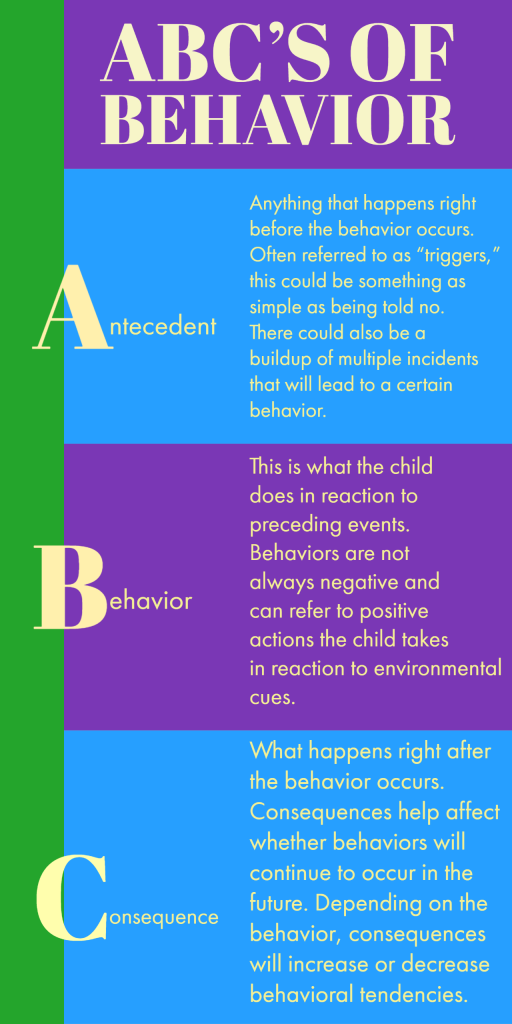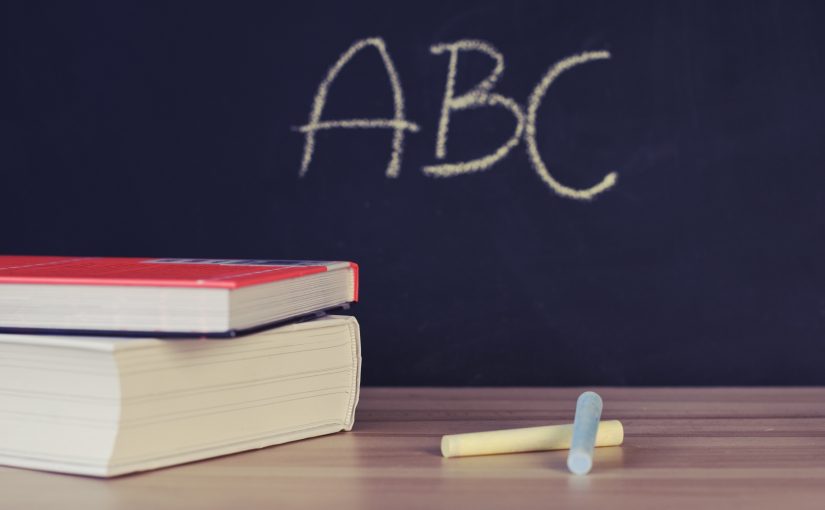Why?
This is the number one question parents ask in the field of ABA.
Why is she acting this way?
Why is he hitting his friends?
Why won’t he stop screaming?
All behavior follows a predictable pattern when using the right roadmap. Our roadmap in ABA is written using the acronym ABC:

Identifying the ABCs in our everyday lives:
1. Antecedent
These are the triggers that cause behaviors. Parents can usually pick out this part of the roadmap pretty easily:
Every time my child is asked to share he…
Every time I tell her to clean her room she…
More often than not, antecedents can be observed right before the behavior occurs. Understanding this section of the ABCs will help us better identify when behaviors happen.
2. Behavior

This may be the easiest one to identify. This is the stand out action and main focus of what we want to influence in the child. Behaviors include crying, screaming, punching, and fidgeting. It is also important to identify appropriate behaviors that we wish to encourage. This can include following directions, sharing, kind words, and manners.
3. Consequences
Consequences can take a little bit of self-awareness to recognize. This happens directly after the behavior. When a child is screaming, crying, or hitting, what is our natural response? How we react to behaviors can show us the consequences we impose.
Consequences can also tell us what the child wants from engaging in the behavior. This could be attention from you, access to an item, escape from an activity or person, or simply because it feels good.
When looking at this roadmap, you may be surprised at what you find!
Let’s look at a few examples!

In this scenario, Julia is alone and wants her mother’s attention. Since Julia does not have her mother’s attention, she decides to implement a behavior (throwing her toy) as a response to her lonely play time. Julia’s mother then comes over to play with her. Julia now has her mother’s attention and will no longer throw the toy.
But here’s the catch!
We know that consequences will either encourage or discourage certain behaviors in the future. In this example, the consequence (Julia’s mother coming over to play) encouraged the behavior (Julia throwing the toy) to occur again!

Next time Julia wants attention, she will be more likely to throw a toy again in order to receive it, since this method has worked for her in the past.
So, what do we do?
In general terms, we prompt! Every case is unique and will have their own intricacies pertaining to behavior severity and the child’s skill level. But with all else being neutral, we can prompt Julia to appropriately ask her mother to play with her. Once Julia asks appropriately, her mother can honor her request by playing with her.
Our new ABC chart will add the prompt component, and look like this:

By prompting this behavior, we are reinforcing appropriate requests for play rather than the throwing of a toy. This will increase the likelihood of appropriate behavior in the future!
Let’s look at another example!

In this instance we see the antecedent, behavior, and consequence working together in a positive way! Mike is asked to do his homework and his appropriate response is to complete it. The consequence for his behavior is access to video games for 45 minutes.

Assuming Mike loves video games, we can infer that the consequence (45 minutes of video games) will encourage the behavior (completing his homework) in the future!
In summary, understanding behaviors will help us identify the antecedents (triggers) and consequences (how we responded) in our everyday actions. We encourage you to take notes on the ABCs of behavior for your child!
Once you find the patterns, ask yourself the following questions:
- Can I prepare my child for triggers that are about to happen?
- Can I prevent/change the triggers in any way to reduce behaviors?
- Can I help my child get what they want in another way?
- How are my own behaviors contributing to my child’s behaviors?

